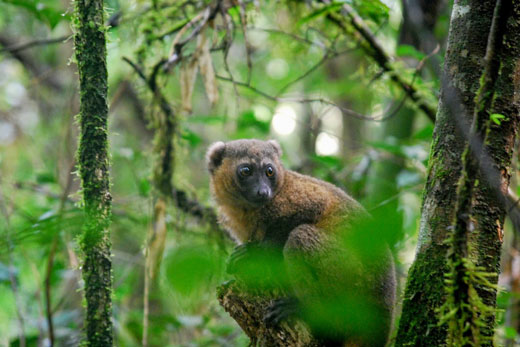"I smell props," says Sarah Zohdy, a biologist in Emory’s Department of Environmental Sciences and the Rollins School of Public Health. She looks skyward, scanning a tangle of thick Tarzan vines, tree branches and leaves that weave the dense rainforest canopy 100 feet above.
"Do you smell that?" Zohdy asks a new arrival to Madagascar’s Ranomafana National Park. "They have a scent like maple syrup."
Then, whoosh! A wide-eyed, fur-covered acrobat, mostly arms, legs and tail, leaps out of one clump of leaves and disappears into another.
"Props!" Zohdy confirms, smiling at the comical effect of the creature. "Their legs are crazy long for their bodies."
Propithecus edwardsi, more commonly known as a sifaka, is one of nearly a hundred species of lemurs. These primitive primates, with large, round eyes and wet, dog-like noses, are unique to Madagascar, an island in the Indian Ocean, off the southeast coast of Africa.
Lemur ancestors arrived in Madagascar some 65 million years ago, perhaps floating over from mainland Africa on mats of vegetation. Isolated on the island, the Earth’s fourth largest, lemurs evolved independently from other primates, diverging into a striking cast of characters: From the teddy-bear cute black-and-white ruffed lemur to the creepy, bat-like aye-aye.

